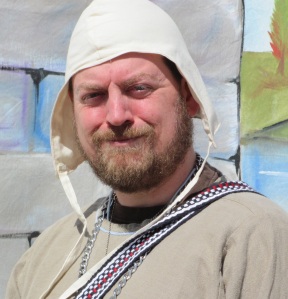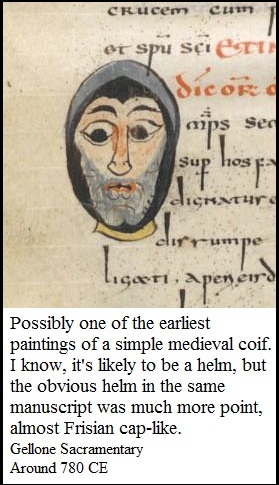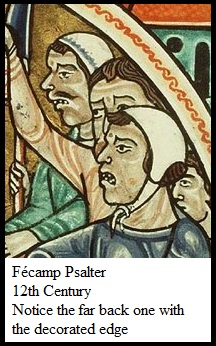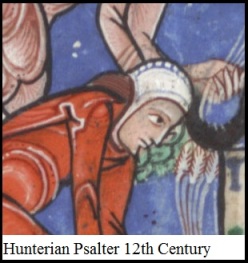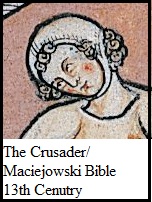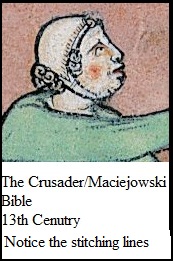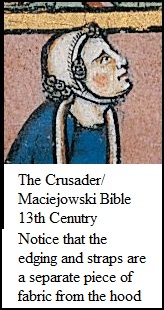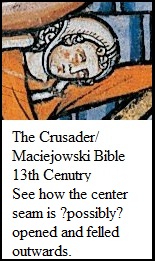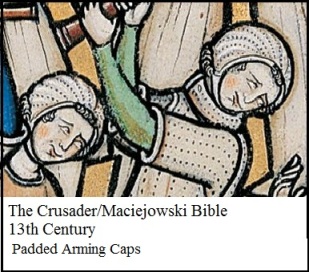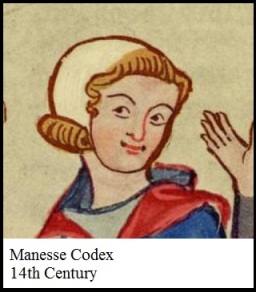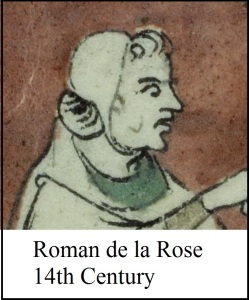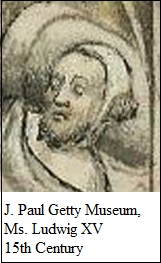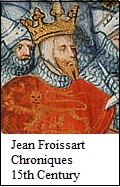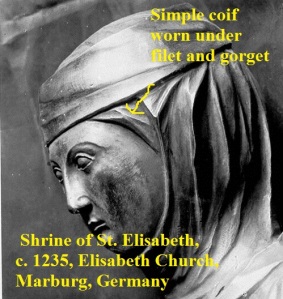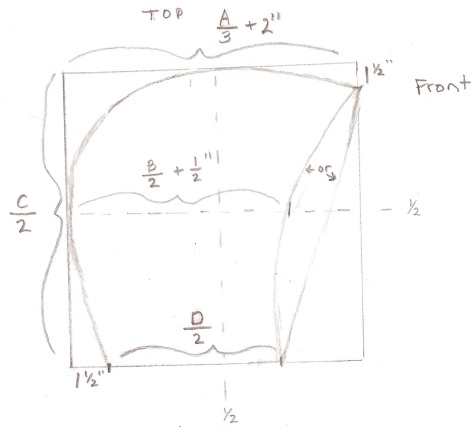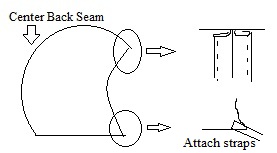Patterning
Continuing on where we left off, we’re going to explore how to pattern necklines based off of your body dimensions.
Whenever I talk to someone about their garb, I always ask them what they do not like about the garb they currently have. Rarely do they dislike how it looks. Most often, it is the fit that makes them like or hate their garb. About half of the time, it’s how the garb fits in the shoulder area, and the other half is the way it fits in the neck.
If the neck is too tight, it feels like it’s choking you. If it’s too loose, you get a sunburn in weird spots or you feel the need to keep adjusting it so it does not fall off. Most people new to making garb fall into the trap of making the neckline too big, and it is very difficult to make it smaller again.
Over the years I’ve tried several ways of measuring and patterning necklines, from using the neck and head circumference in a long math formula to holding up a clear quilting measuring square and plotting out the neck shape from there. I’ve not had much luck with these methods despite that they seem like they should work.
The neckline measurement technique I’ve had the nest luck with is based off of Mistress Margaret Bruce’s “Magic Neckline Trick”, which was a brilliant idea of using body proportions to create a perfect neck-hole. You can find her original handout here:
http://www.chesholme.com/wfiles/2-2-Magic-Neckline-Trick-Pt-1.pdf
http://www.chesholme.com/wfiles/2-3-Magic-Neckline-Trick-Pt-2.pdf
I tested her trick out over the years and made my own modifications. Remember that this is a general technique that works with my family. You may need to adjust it depending on head shape and neck size.
With this method, you end up with the smallest possible neck-hole that will fit over your head. If you want a larger opening or something that is scooped or shaped differently, use the method as a starting point. Begin enlarging by adding length to the front, not the back and definitely not the sides. Adding length and width to the back and sides will make an ill-fitted neck-hole.
With children, use this method as a starting point. Children’s heads are not proportional to the rest of their body and are almost always big compared to their other parts.
Step 1
We are working with only one half of the neck-hole. Whatever pattern we end up with, we will fold the paper in half along the vertical line (up and down line) and cut out both sides at once. This way, we have a neckline that is the same shape on both sides. Left or right, it does not matter. I find it easier to work with my left hand because I am right handed.

Take a large sheet of paper or tape several sheets together. Near the center, draw a set of perpendicular lines.
Step 2

On the top section of the perpendicular lines, mark the width of your first two fingers at their widest. On my hand, my first two fingers are the widest close to the knuckles.
Step 3

On the left (or right) side of the center, mark the width of your 4 fingers at the widest. On my hand, my 4 fingers are the widest where the fingers and palm connect.
Step 4

On the bottom section of the lines, make a mark the width of the widest part of your whole palm, including your thumb. On my hand, this point is just below the thumb.
Step 5
At this point, you have a mark on the top and bottom of the vertical line and a mark on either the right or left of the horizontal one. Label the top mark A and the bottom mark B.

Measure the distance from point A and point B. Write this number down somewhere.
Measure around your head where it is the widest. My head is the widest near my temple, but depending on your head shape you may need to measure over the ears or nose. Write this number down as well.
Step 6
Take your head circumference and divide it by 3. Take this new number and subtract the length of AB from it. Add that amount to the bottom of your lines and mark it point C.

If you are lost, that’s fine. I’ll show you what I mean.
Example

After measuring my hand, the distance between points A and B is 6 inches. My head is 21 inches around where it is the biggest.
21″ ÷ 3 = 7″
I subtract the 6″ of my original AB line from the 7″. 7″-6″=1″
Just below point B, I add 1 inch and mark that point as point C.
If the circumference of your head does not divide evenly by 3, use a fraction. For example, 22″ would be 7 1/3″. 23″ is 7 2/3″.
This plot is what we will use to make all of your neck openings.
Making Round Necklines
Let’s start out with your basic round neckline.

This is fairly easy. Connect point A to the mark on the horizontal line. The tendency is to go straight across, but round it out instead. I use a French curve to make sure that I’m getting the most rounded line I can.
Connect point C to the same horizontal mark. Again round it out.
That’s it! That is your neck-hole. For the basic round neckline, you will ignore point B. Do not adjust this hole for seam allowance or hemming. The opening works best when it is opened a bit more by hemming it or sewing it to a facing with 1/4″ allowance and clipping the curves.
Now fold the paper in half along the vertical (up and down) line and cut out the half circle you drew.
When you unfold it, this is the smallest possible round neckline that will fit comfortably on you. If you want it larger, start by trimming on the bottom.

Round Neckline Facing

Once your have your basic shape, you can use the shape to cut out your neck-hole or you can use it to make a neck facing or contrasting color of fabric.
How wide do you want the facing or contrasting fabric? How big of a hem do you need on the facing edge? Add these two numbers together. (I usually do a 2″ facing with a 1/2″ hem allowance, making my sum 2 1/2″).
From points A and C and the mark on the horizontal line, make a mark the length of your sum. For me, that is 2 1/2″. Label these marks D, E and F. Connect D, E and F with a rounded line that follows the curve of your original half-circle.
Fold the circle in half and cut out both the internal and external circle, like this:

The top line becomes the center back. The bottom line becomes the center front and the two side lines become your shoulder lines.
Round Neckline with Split Front
Many people like the tighter neckline, but they need a bit extra of an opening to get their heads through. You can accomplish this with a slit in the front.

Instead of connecting the horizontal point to point C, connect it to point B. Then from B to C make a small diagonal opening.
That’s it! It gives you a tighter neck so that you don’t burn as much, but the slit makes it so that you can pull the tunic over your head.

To make the facing, use the same technique as your did for the round neckline, but make a key shape around point C.
Tricks and Tips for Making Necklines Easier
Tip 1: Do the neck first
Cut out and finish the neckline right after you have cut out the body and before you sew any side seams.
Most people do the neckline last. Why? At this point you have to work with fabric that is not flat but is curved by the sleeves and side seams. Why not start with the neckline?
If you cut out and finish your neck right after you have cut out the body and before you do anything else, you work with a nice flat piece of fabric. It not only makes it easier to sew, but it will lay better when you have finished the garb.
Tip 2: Don’t cut the hole until it’s sewn on the body
If using facing or a contrasting color, sew the neck and the body together before you have cut any holes out.
Yeah that sounds weird, but fabric moves. And once you cut a big hole in it, it will move even more. Cut out your body. Mark your shoulder points and center front and back on the body piece. Cut out your neck facing or contrasting neckline fabric. Mark the shoulder points and center front and back on the neck. Using your paper template, mark the hole on the neck facing with tailors chalk or a water soluble fabric pen.
Pin the neck facing to the body piece. Sew them together right on or a 1/4″ outside of the neck hole line you drew.
Now cut the neck hole out, turn the facing over and stitch or hem it to the body.
You are welcome!
I have the diagrams for making the other shapes, but I’m done for the day. My kids, which I homeschool, need to start their lessons and it’s already 11:00. More later.
Happy Garb-Making!!






























